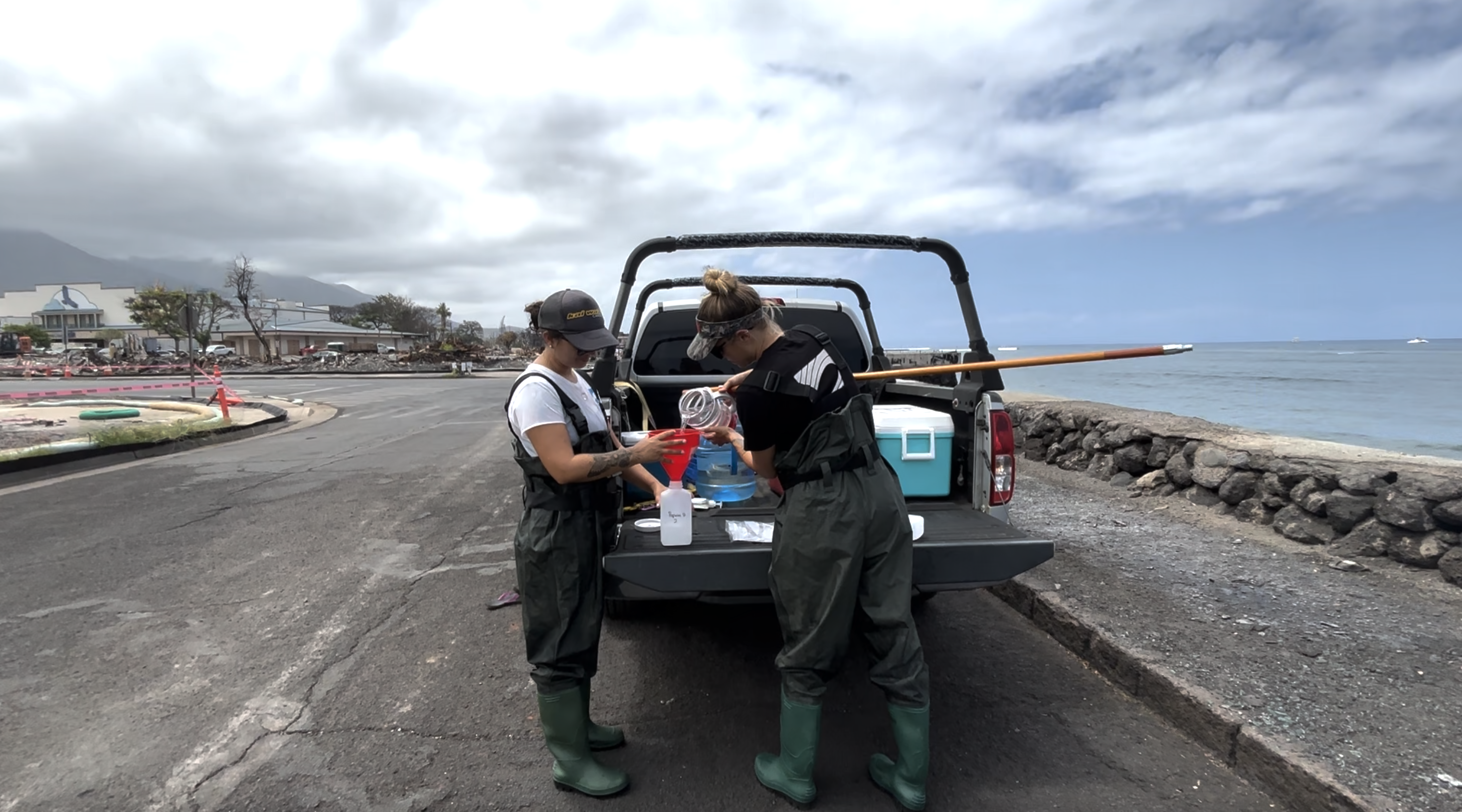
Coastal Water Around Lāhainā is Safe For Recreation
On June 5th 2024, Surfrider Foundation Maui chapter collected a second round of water samples on West Maui to test for fire related metals in coastal waters in and around Lāhainā. In line with our previous results from January, we did not find any evidence of fire-related contamination that would put human health at risk from recreation in the ocean. The metal concentrations measured by PHYSIS labs in CA are well below World Health Organization (WHO) recreational guidance and drinking water regulations set by both the Environmental Protection Agency (EPA) and WHO.
.jpg?width=424&height=565&name=IMG_4351%20(1).jpg)
Earlier this year our chapter initiated a Maui Post-Fire Monitoring Program to address community concerns regarding coastal water quality and ocean recreation safety. Basically we wanted to help answer the question we kept hearing - Is it safe to get back into the water on the West Side? In order to design a program that would best help us answer this important question we brought together a network of water quality and public health experts including the Hawai`i Department of Health and research scientists to advise us on our sampling plan, testing methods and data analysis and communication.
Our first round of samples and other monitoring studies including United States Geological Survey sediment samples did not find evidence of any concerning levels of highly toxic chemicals like PAH’s from this fire. As such, we are focusing our monitoring efforts only on metals.
Our results and what they mean
In line with our previous data, we didn't see any dissolved metal concentrations besides copper and zinc, that stood out as elevated beyond what we may normally expect in coastal ocean water samples. However, test results for copper and zinc were considerably lower than concentrations that could pose a threat to human health.

One difficulty when determining potential health risk from metals in the ocean is a lack of specific recreational ocean water quality standards for these contaminants. Despite this challenge, WHO has recreational water screening levels and drinking water standards, and EPA has aquatic life standards and drinking water standards which we used as reference points.
The WHO screening levels for recreational waters are set at 20 times their guideline for drinking water. All of the test results showed metal concentrations well below these recreational screening levels and drinking water standards. Copper levels at Papalaua St. and Lāhainā Harbor are above EPA Aquatic Life Standards indicating potential risk to aquatic organisms.
To access the complete data set please follow this link to results. Please note that the previous results are also included for comparison with the more recent data highlighted in yellow.
Table 1. Dissolved metal concentrations (in micrograms per Liter of seawater) at DT. Fleming, Papalau St. and Lāhainā Harbor 6/5/2024

What's different this time?
In accordance with Department of Health sampling guidance, collected samples using a Multi-Increment sampling method. Basically, this just means that we spread out the collection of water over time and space. This method collects a sample that better represents concentrations of metals and other pollutants in the water than in a single grab sample that is collected all at once. 
As discussed in our previous data set, there are some hurdles when it comes to interpreting fire related metal concentrations in coastal waters. One of the hurdles is a lack of relevant pre-fire metal concentrations in coastal waters or relevant reference samples. In an effort to provide context and a baseline for our data, we collected samples at DT. Fleming. This beach is far enough away from the burn zone that there is low likelihood of fire-related contribution of heavy metals, but there is a freshwater stream and runoff in the contributing watershed to establish a reference showing the typical contributions of metals to nearshore waters from runoff of soils on west Maui. Hawaiian soils are known for their naturally high levels of aluminum, iron, manganese and titanium and we want to be able to pull out the impact of the fires on metal concentrations in nearshore waters from the background levels caused by normal erosion and runoff.
Our goal with this round of sampling was to test during different environmental conditions than our previous testing date to see how these conditions might impact our results. Our last sampling in January was during heavy rains that caused stormwater runoff and brown water conditions. This time we sampled during the dry season and a south swell which could resuspend contaminants that have settled on the bottom and potentially affect their concentrations in the water column.
Please reference this document (link) to view our Standard Operating Procedures and Quality Assurance/Quality Control procedures

Continued water quality monitoring efforts
Hawai`i Department of Health along with Hui O Ka Wai Ola, ERG consulting, and Element Environmental have a quarterly post-fire coastal water quality monitoring program to sample for metals, nutrients, and other potential indicators of wildfire impacts. Consistent with our data, their monitoring efforts are confirming that coastal waters around Lāhainā are safe for recreation.
We encourage you to visit their Maui Wildfire Data website (link in graphic above) where they give detailed explanation and data for their wildfire monitoring efforts including air, ash and debris, beach sand, coastal sediment, coastal waters, and West Maui TDS site. They also have a page dedicated to nearshore coastal water quality monitoring which includes our data.
As data continues to indicate the recreational safety of nearshore waters around Lāhainā, we plan to scale our monitoring efforts back and potentially resume testing during the rainy season.

